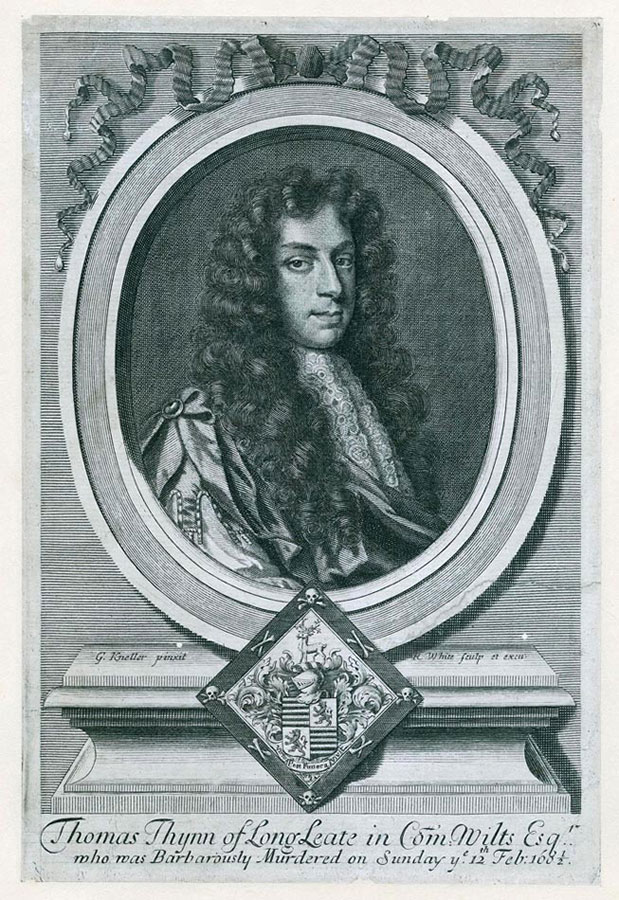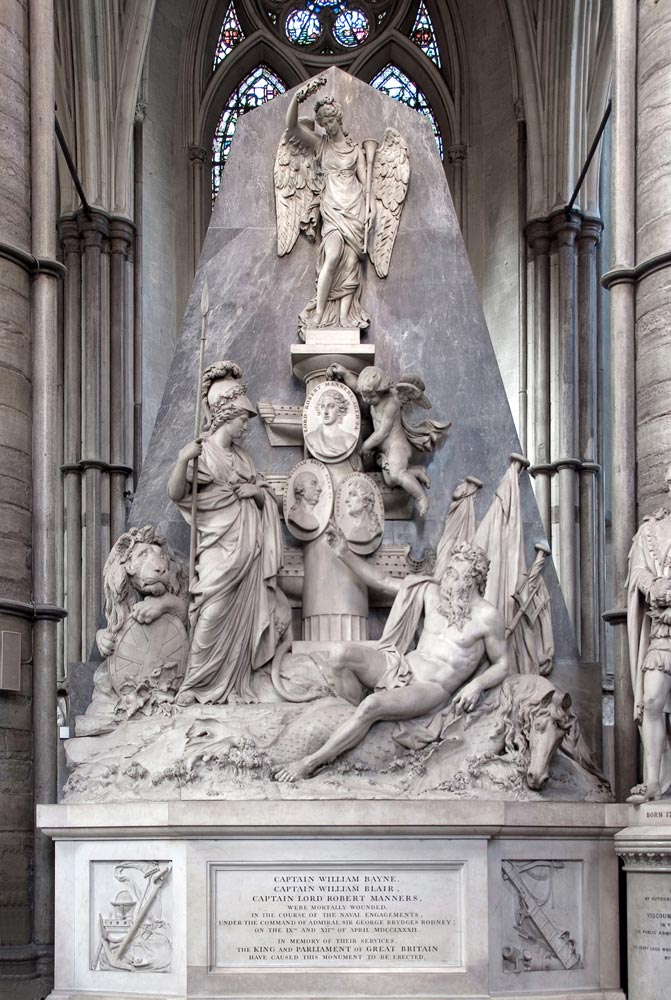Sir Clowdisley Shovell
In the south choir aisle of Westminster Abbey is a large marble monument (about 20 feet high) to the famous Admiral Sir Clowdisley Shovell, by the sculptor Grinling Gibbons. It was erected by order of Queen Anne and the inscription reads:
Sr CLOUDESLY SHOVELL Knt Rear Admirall of Great Britain and Admirall and Commander in Chief of the Fleet: the just rewards of his long and faithfull services. He was deservedly beloved of his Country and esteem'd, tho' dreaded, by the enemy who had often experienced his conduct and courage. Being shipwreckt on the rocks of Scylly in his voyage from Thoulon the 22d of October 1707, at night, in the 57th year of his age his fate was lamented by all but especially the sea faring part of the Nation to whom he was a generous patron and a worthy example. His body was flung on the shoar and buried with others in the sands; but being soon taken up was plac'd under this monument which his Royall Mistress has caus'd to be erected to commemorate his steady loyalty and extraordinary vertues.
Rather oddly, Shovell is depicted reclining on a couch dressed in Roman armour wearing a large wig. At the base of the monument is a relief of the shipwreck. At the top of the monument a winged boy holds his shield of arms, granted to him in 1692 in commemoration of his victories over the Turks and French - gules, a chevron ermine, in chief two crescents argent, in base a fleur de lis or (a chevron with ermine pattern, two silver crescents above and a gold fleur de lis at the base).
Life and career
Clowdisley (Cloudesly or Cloudisley) Shovell was the son of John Shovell (1625-1654) of Cockthorpe in Norfolk and his wife Anne, daughter of Henry Jenkinson and Lucy Clowdisley of Cley. He was baptised on 25th November 1650 and first went to sea in 1664 under the care of Admiral Myngs (probably a relative). Family tradition said that as a boy in the Second Dutch War he carried despatches in his mouth, swimming through enemy fire. He then served with Sir John Narborough whose widow Elizabeth (daughter of John Hill, Commissioner of the Navy) he married in 1691 at All Hallows, Staining. By 1677 he was captain of the Sapphire, spending much of the time in the Mediterranean cruising against the Barbary pirates. After the battle of Bantry Bay in 1689 he was knighted and was promoted rear admiral in 1690 and fought against the French at Barfleur and assisted in the capture of Gibraltar. After many engagements he became Admiral of the Fleet in 1705 and was returning to England when his ship Association foundered on rocks off the Scilly Isles, possibly due to faulty navigation charts. The Admiral was still living when he was thrown up in Porth Hellick cove. However, a woman seeing an emerald ring on his finger, killed him for it. She confessed her crime on her death-bed thirty years later. Shovell's body was embalmed at Plymouth and made its way through the west country attended by great crowds and lay in state at his town house in Frith Street, Soho.
Burial
He was buried with great ceremony in the Abbey on 22nd December 1707 at midnight. The funeral was paid for by Queen Anne. His body was carried in state from his house in Soho Square to the Abbey.
Jodocus Crull, the writer of an Abbey guide (1715 edition appendix), describes him as a person of uncommon courage, esteemed by the kings of Spain and Portugal, as well as Queen Anne. He goes on to say of the Admiral "His Temperance, Humanity, and Affability in Conversation, were the more eminent in him, as his Education and constant Way of Living, from his Infancy, had exposed him to the Conversation chiefly of Marine Officers and others; yet he had nothing of that rugged Humour, which so near resembles that ungovernable Element, upon which he had spent the greatest part of his Life, nor of those extravagant Passions which are so frequently observed in the Seafaring Generation, no more than of that Excess of Drinking which is so common among them".
Elizabeth Shovell and children
His widow Elizabeth died on 15th April 1732 and is buried in St Paulinus Church, Crayford, Kent. They had two daughters: Elizabeth married firstly Sir Robert Marsham who became Lord Romney and secondly John, Earl of Hyndford who was English minister at the court of Frederick the Great. Anne married the Hon. Robert Mansel, and secondly John Blackwood. The inscription on his widow's memorial and that of her son in law Robert Mansel, both at Crayford, can be supplied by the Abbey Library.
Further information
A full length portrait of the Admiral is at the National Portrait Gallery in London
Shovell also gave money to build the Corn Exchange in Rochester, Kent and his coat of arms appears on the clock outside that building
Oxford Dictionary of National Biography
Sir Cloudesley Shovell. Stuart Admiral by Simon Harris, 2001
Precursors of Nelson. British Admirals of the 18th century by P. Le Fevre & R. Harding, 2000
Papers on the funeral are at the College of Arms in London
British Royal and State funerals.... by M. Range 2016
His papers are at the National Maritime Museum, Greenwich and at the British Library among other repositories. See The National Archives - Discovery.

[Public domain], via Wikimedia Commons

This image can be purchased from Westminster Abbey Library
Image © 2024 Dean and Chapter of Westminster

This image can be purchased from Westminster Abbey Library
Image © 2024 Dean and Chapter of Westminster










